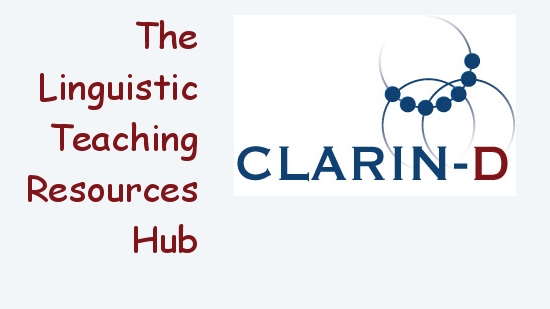

Image © Paul Watson, Licence CC BY-NC-SA 2.0
In the following the meanings and conventions of the input fields are explained.
The title of the described teaching resource
Some keywords describing the contents of the resource. Suggestions for good keywords are: Described tools, tasks to perform, linguistic fields.
Enter the keywords as a comma separated list. Keywords may contain blanks.
corpus management, corpus administration, IMS corpus workbench
The authors of the described teaching resource
A single author is given in the format Firstname Lastname. Separate multiple authors using a comma.
Jane Doe, Renate Mustermann, Otto Normalverbraucher
The languages used in the described teaching resource.
You can choose from a list of predefined languages. If you want to extend the list, please contact the TeLeMaCo administrator.
We provide a special language tag without words for materials that aren't in any particular language (like videos or screencasts without audio).
The institution who makes the material available. This entry is used to create the BibTeX entry for the material.
The year when the material was published. This entry is used to create the BibTeX entry.
What do you learn by using the described resource?
In the objectives you may use Textile markup to improve readability. The Textile markup language is described here: Textile (markup language).
Who should use the described resource?
Differentiate by discipline, e.g., Computational linguists, Historians, ...
What do you need to know in order to use the described resource?
In the field prerequisites you can use Textile markup, e.g., to add a reference to another material described on TeLeMaCo. The Textile markup language is described here: Textile (markup language). See also: How can I link to content inside TeLeMaCo?
The level of the described resource
Predefined levels are: Basic, Intermediate, Advanced, Expert. If you think, that you need another level, please contact the TeLeMaCo adminstrator to add it to the list.
The type or genre of the described resource. Please do not confuse this with the media of the resource described below.
Possible types include: Tutorial, Quickstart, Howto, Small teaching module, Large teaching module
The media for the described teaching resource
Use MIME types like text/html or application/pdf whenever possible. In case of doubt, just use audio, text, or video.
The location where the teaching resource can be found
The licence under which the resource can be used and re-used
When you are unsure about the licence, enter "unknown" here or leave the field blank. Only enter the name of the licence when you are sure about it.
Possible values include: unknown, CC-BY-SA, GFDL (GNU Free Documentation Licence)
How the resource can be accessed.
Currently, we support only two types of access:
We do not support the addition of commercially licenced material.
A short and concise description of the teaching resource. The length is comparable to an abstract of an article.
In the description you may use Textile markup to improve readability. The Textile markup language is described here: Textile (markup language).
BibTeX classifies all publications into several types. If in doubt, use the type misc.
The BibTeX type is used to automatically create a BibTeX entry for the described material. You can change the generated BibTeX entry manually after saving the description.